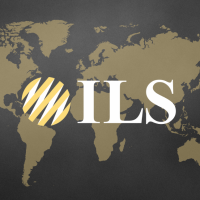International Location Safety (ILS) have recently published a blog about ‘Travel Risk Management: Getting ready for ISO31030’, which you can find below. Details of their introductory webinar are also linked at the bottom of this page.
What is ISO31030?
In 2019, I was invited to join a committee of fellow risk management professionals to work on the development of a new International Standard, ISO31030. I was flattered to be invited and excited to join the committee. For me, the development of guidance to support organisations to manage the risks associated with international travel was long overdue.
Two years and a global pandemic later, we are preparing to publish the guidance. The publication of ISO31030 couldn’t have come at a more opportune moment; as businesses, organisations, and institutes consider international travel again, this new standard will equip them with the tools needed to restart travel programmes with a risk-considered approach.
Why is it important?
ISO31030 is an original standard. It is aligned with ISO31000, the de facto risk management standard. ISO31030 can be used by organisations of any size and sector. Travellers might be deployed for long or short-term assignments; conducting research, implementing projects, or attending business meetings. They could be staff, volunteers, contractors, or students. The introduction to the standard informs the reader that one of its aims is to ‘promote a culture where travel related risk is taken seriously, resourced adequately, and managed effectively.’ The promotion of a culture of risk management is a challenge that most organisations face. Developing policies and procedures is reasonably straightforward, but taking them from paper to practice can be more complicated. This is a problem that ILS have focussed on providing solutions to for many clients over a number of years, and we are delighted that ISO31030 offers clear and standardised steps to the implementation of travel safety processes.
Robust programmes that meet international standards require allocation of resources and investment of time and finances. ISO31030 therefore recognises that, for organisations to engage with travel risk management, they must be aware of the benefits to them and their stakeholders, and sets these out clearly. While organisational advantages- from financial, to legal, to reputational – are undoubtedly important, the key benefit of good travel risk management processes is the safety of your staff. After all, travel risk management programmes are designed to protect the traveller. Business travel is an enjoyable element of a job role for many, as well as often being vital to the functioning of their organisation’s work. For us involved in the creation of this new standard, travel for work should remain a positive experience, not bound in red tape and bureaucratic process. ISO31030 recognises that not all travel warrants the same level of rigour for risk assessment and management. The document provides a comprehensive set of risk treatment options that an organisation can consider, but states that application of these should be ‘reasoned and proportionate to the risk exposure.’ The aim is to encourage pragmatism by travel risk managers, so that the standard is used to enable rather than impede travel.
What should I expect?
ISO31030 can be divided in to 4 thematic areas, making it straightforward to implement:
1. Understanding the organisation and its context: ISO31030 considers the operating context, the stakeholders and travellers, the business objectives, and the associated risk attitudes as central to the design of a risk appropriate travel risk management programme.
2. Travel Risk Management and processes: Not surprisingly, the standard considers the importance of risk assessment, as well as an array of risk treatment solutions.
3. Journey and Operational Management: Here the standard looks at the implementation of risk controls, preparation for travel, levels of training, travel authorisation, communications planning, tracking solutions, and incident management planning.
4. Recording and Reporting : This section considers how travel risk management programmes should be implemented, monitored and improved.
It’s important to remember that ISO31030 is a guidance document. It is intended to assist those managing and participating in organisational travel. ILS can help you comply with the standard, but there is no formal assessment for compliance. Like my fellow committee members I am thrilled to have been involved in the creation of this document. I can’t stress how important the guidance will be going forward, as we look excitedly to the future when international travel can once again return. ISO31030 promotes a risk-based approach to travel that allows travellers to be both protected and empowered, and organisations to benefit more than ever from international travel programmes.
George Shaw is the managing director and co-founder of ILS, with extensive experience of building capacity of international and national NGOs and mentoring security focal points.
